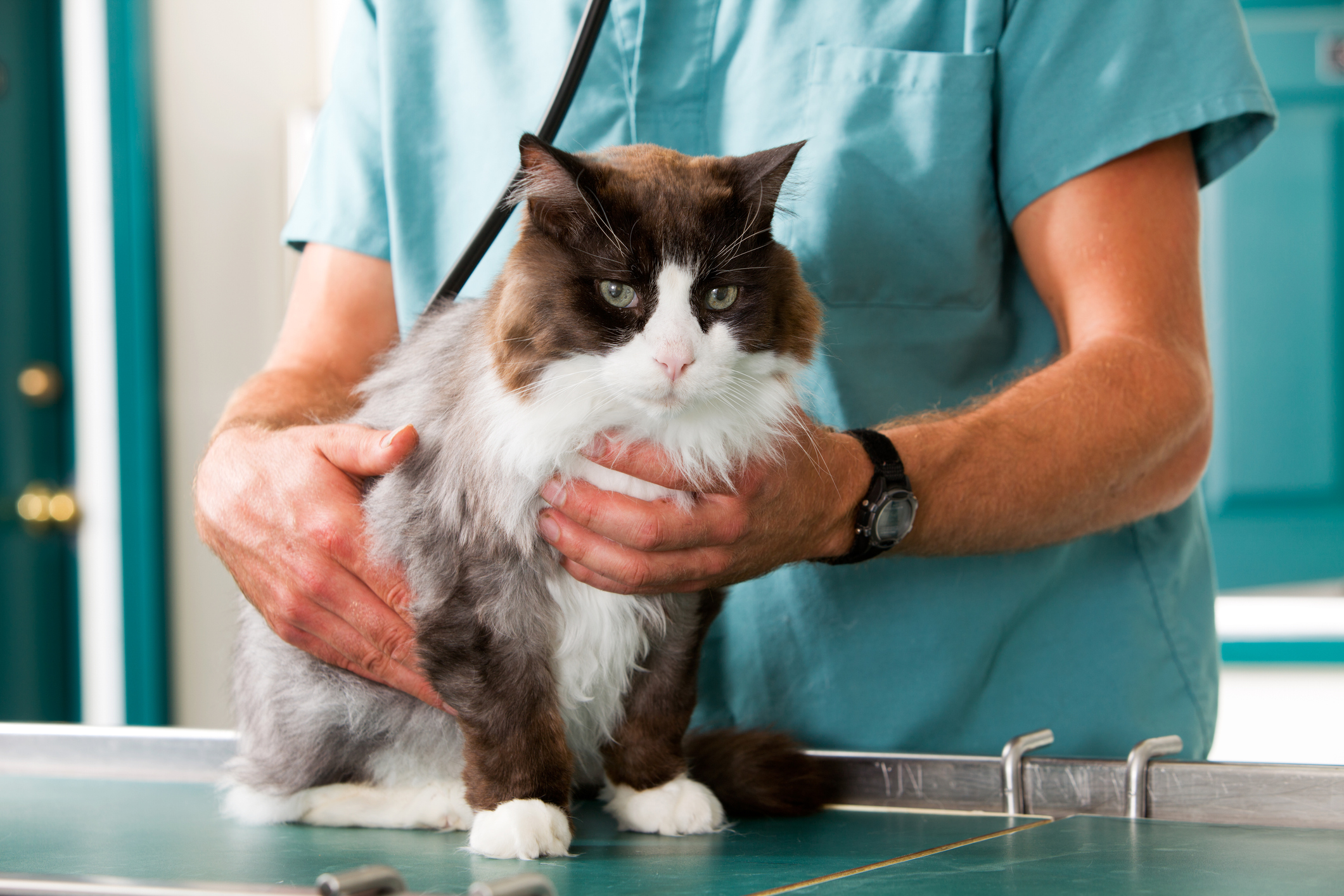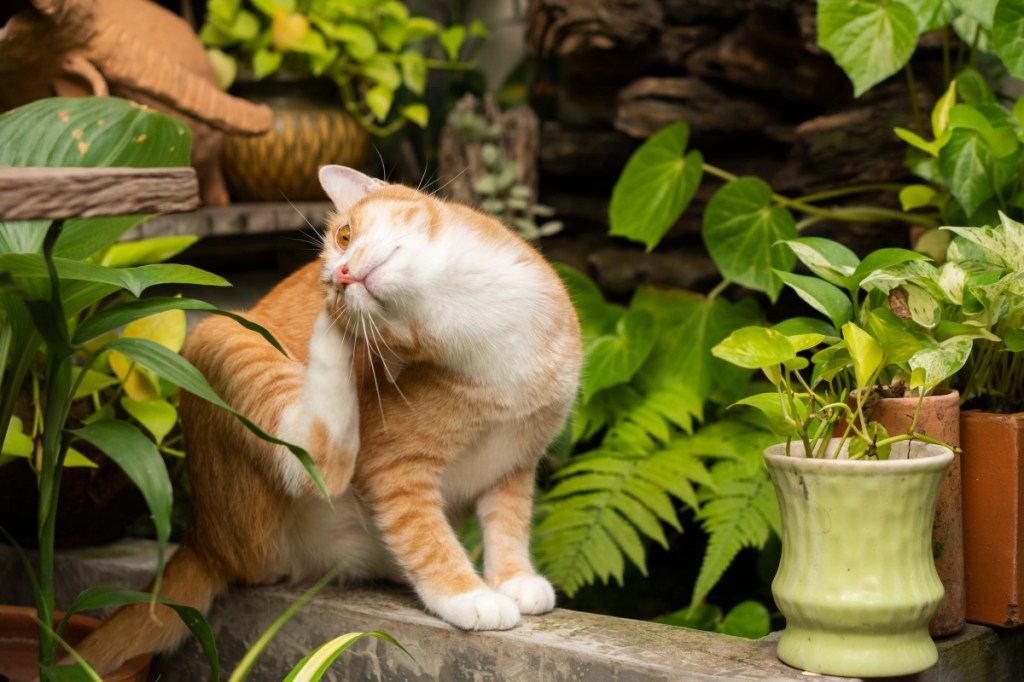Table of Contents
Pet parents often struggle with the question of whether they should head to the vet or wait it out when their pet is feeling “off”. We completely understand the hesitancy, especially when we’re talking about cats since they’re typically not fans of carriers, car rides, or strange places. Finances should be taken into consideration as well, and by enrolling in pet health insurance, you won’t have to worry nearly as much about your wallet. To help you navigate these tricky waters with more clarity, we’ve put together a list of signs that indicate that vet intervention is required immediately.
Be on the lookout for these signs of medical distress that require swift veterinary attention.
Refusing to eat or drink
There’s something amiss if your kitty suddenly stops eating or drinking. You can try other foods and changing out their water dish if you suspect that it might be a temporary refusal (some cats can be quite picky), but if the issue persists then there’s probably something greater going on. Cats need sustenance and hydration to live, so immediate attention is required. Most vets recommend giving them a call when you notice your cat abstaining from drinking water, as well as the opposite – a cat drinking lots of water may be at risk of an endocrine disorder.
Consistently going outside of the litter box
Sometimes a kitty will go outside of the litter box because they’re trying to communicate something to you. It might be as simple as, “Hey! You need to clean this thing out!” but other times it can be a symptom of something more serious. If your cat urinates or defecates outside of the litter box on an ongoing basis, it’s time to see your vet.
Diarrhea or constipation
This is a sign that something is going on in your cat’s gastrointestinal system. It’s possible they ate something bad and need to get it out of their system, or it could be a sign of infection or other disease. Your vet can take a look at what’s going on to help your kitty get back to normal.
Hiding or a major change in personality
Cats that aren’t feeling well will hide. It’s their way of protecting themselves when they are not feeling well. Also, if your kitty’s behavior has changed drastically — such as not playing with their favorite toys, acting lethargic, crying out when they usually don’t, not speaking when they usually do — it’s time to go to the vet.
Blood in cat’s urine or stool
This one’s pretty straightforward and should be addressed immediately. Additionally, a change in the consistency of one’s urine or stool indicates a serious illness or injury.
Infection that grows worse
Cats get themselves into all kinds of trouble, and usually their bodies do a pretty good job of healing. However, if an infection only seems to get worse with time, veterinary assistance is required. This goes for any location on the body: skin, eyes, paws, anus, and genitals. Look for swelling, indications of pain, fever, and abscess.
Limping that doesn’t get better
Again, sometimes kitties get themselves into trouble. A limp that doesn’t resolve on its own after a few days should be looked at by your vet. Any limp that’s clearly causing your cat great pain (crying out, refusing to walk) should be addressed right away.
A wound that won’t stop bleeding
If your kitty has been in an accident or fight and has clear signs of damage — such as profuse bleeding, broken bones, exposed skin tissue, etc. — head to an emergency clinic immediately as these injuries can be fatal. Cats suffering from bites need vet attention to prevent infections as well as x-rays to check for internal wounds.
Note: If your cat is bleeding, apply direct pressure using gauze, and if the gauze soaks completely through, do not remove it – simply add more gauze on top of it until you get to the veterinary hospital. Familiarize yourself with how to craft a splint or tourniquet.
Ongoing sniffles
Cats catch colds just like humans and should be carefully monitored when they get sniffly and sneezy. Built up crust and goo around their nose and eyes is also a sign they’re battling a cold. While sometimes cat colds do heal on their own, just like human colds, they may be indicative of something more serious such as an Upper Respiratory Infection. If symptoms persist for longer than the usual 10-day cycle, seek help from your kitty’s veterinarian.
Habitual vomiting
Cats notoriously do the “scarf and barf,” which is when they eat too fast and the food is ejected from their esophagus. This should be addressed, of course, but doesn’t always require vet assistance. Vomiting, on the other hand, is a different story. Vomiting refers to food that’s ejected from your cat’s gut. It will look partially processed or even mushy, and be much more liquid-y. If your cat is habitually vomiting, your vet needs to check out what’s going on internally.
Cats are notoriously skilled at hiding ailments. This is ultimately a survival strategy carried over from their non-domesticated ancestors, who couldn’t afford to show signs of weakness in the great outdoors lest they become easy prey. For that reason, their illness is often not apparent to even the most attuned owner until things have gotten bad. This is partly why annual visits to the vet are so important.
If your cat begins displaying any of the above signs of medical distress, then you know it’s probably serious. In such cases, it’s very important to see your vet immediately. There, your vet can assess your kitty, diagnose, and come up with the proper treatment plan that will bring your pet some much-needed relief. If you’re still questioning whether you ought to take your cat to the vet, it’s best to err on the side of caution.
Overall, how often should you take your cat to the vet?
Cats are notoriously skilled at hiding any ailments. This is ultimately a survival strategy carried over from their non-domesticated ancestors who couldn’t afford to show signs of weakness in the great outdoors, lest they become easy prey. For that reason, their illness is often not apparent to even the most attuned owner until things have gotten bad. This is partly why annual visits to the vet are so important.
According to the American Association of Feline Practitioners (AAFP), 83 percent of cats visit a veterinarian before their first birthday, but more than 50 percent don’t return until they become sick or are in pain.
The Partnership for Preventive Pet Healthcare reports that nearly 40 percent of pet owners turn to the internet (they “Google” it) to get information before contacting their veterinarians. But annual check-ups are important to keep your cat healthy. When it comes to your cat’s health, it’s always better to be proactive than reactive.
The AAFP says check-ups are important for several reasons:
Cats age much faster than humans
By his first year, your sweet kitty has reached the human age of 15 and by his second year he’s the human equivalent of 24. Each year after that, he ages four cat years for every calendar year. A lot can happen as your cat ages, so an annual check-up is crucial.
Your cat may be obese
More than 50 percent of cats are overweight or obese. You may think your cat is just fluffy, but just a few extra pounds can put your cat at risk of developing diabetes, as well as heart and respiratory disease. Your vet can determine if your cat is at a healthy weight and if not, what to do to help him slim down.
Any behavior changes?
At your cat’s annual exam, you can give your vet an update on any behavioral changes or changes in eating, drinking or sleeping habits. Your vet will take your cat’s history into account to determine if even the subtlest changes might be a sign of a health issue.
During the annual check-up, your vet will check your cat’s ears, eyes, coat, and skin. She will also check your cat’s abdomen, joints, spine, and his muscle tone.
The bottom line is that regular check-ups can help you avoid medical emergencies that are painful and frightening (for both you and your cat) by detecting illnesses before they become significant or expensive to treat.
Giving your kitty the best health care with a full recovery can be expensive. Having pet insurance can help cover the cost (as much as 90%) on these infections and injuries, but also you’ll sleep easy knowing you can say “yes” to all treatments and medications.







